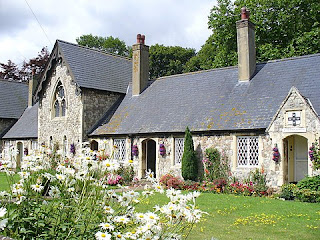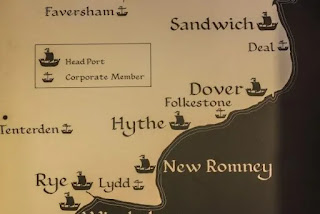William of Malmesbury (writing decades later, to be fair) described him as crassi et hebetis ingenii, "thick and dull of character." There is also his reputation for having physically abused his wife, mentioned in the biography of Vitalis of Savigny. Vitalis either threatened him with dissolution of the marriage, or left his service which so bothered Robert that he repented of his ways.
Robert and William shared a mother, Herleva of Falaise, who was also the mother of Odo of Bayeux, who became a bishop. As Duke of Normandy, William had jurisdiction over the county of Mortain. A 12th century poet, Benoît de Sainte-Maure, wrote that Duke William exiled a prior Count of Mortain named William Werlenc and replaced him with Robert. When the planning for the Norman Invasion of England began, Count Robert was part of the council and promised 120 ships, a larger number than any other source.
Robert is also included among the definitively known companions of Duke William in the Battle of Hastings. Trying to identify from records those who were present—and those who appear on the Bayeux Tapestry—has been a pastime for historians (fewer than two dozen have been "confirmed"). In the scene above one can see "Rotbert" at William's left side and Odo on his right, showing the importance of his half-brothers to the duke.
For his participation, Robert received from William an enormous amount of land. By the time the Domesday Book recorded all real estate and ownership, Robert held 797 castles, mostly in Cornwall where he held so much that he was functionally "Earl of Cornwall" even though he did not formally hold the title (the first Earl of Cornwall was officially Brian of Brittany, who also was a supporter of Duke William).
In 1069, Robert led a force northward that slaughtered many Danes in Lindsey, after which he drops out of the records except for the mention in Domesday. He was succeeded as count by his only son William, the 2nd Earl of Cornwall, who was offered Mary of Scotland, the daughter of King Malcolm III of Scotland, for his bride, but turned her down. He had three daughters.
Speaking of women and wives, let's turn to Robert's mother, Herleva, for tomorrow's post. See you then.










